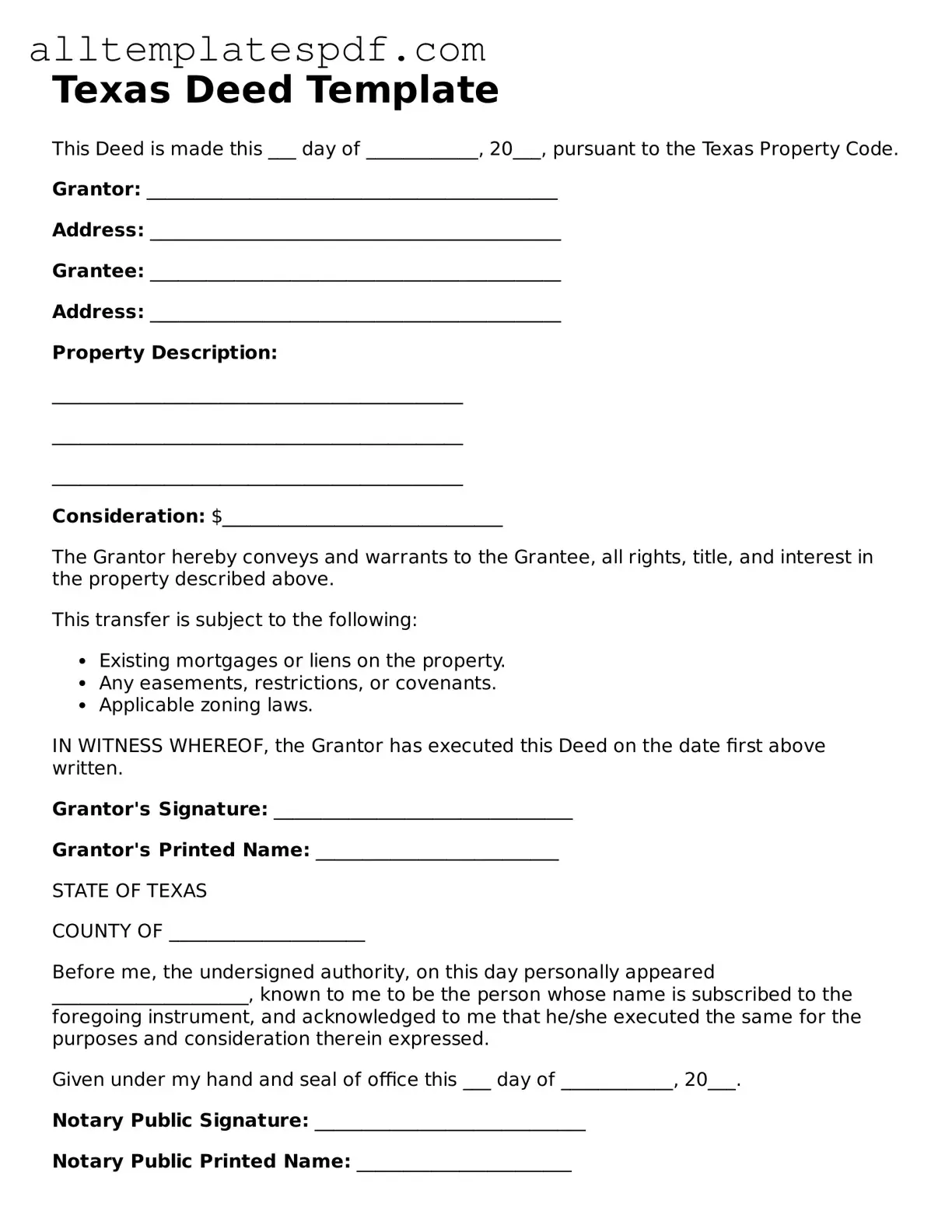Filling out a Texas Deed form can be straightforward, but many people make common mistakes that can lead to complications. One frequent error is not including the correct legal description of the property. This description must be precise and often includes the lot number, block number, and subdivision name. Omitting or inaccurately describing the property can result in legal disputes or difficulties in transferring ownership.
Another mistake is failing to sign the deed. Both the grantor and grantee must sign the document for it to be valid. If either party neglects to sign, the deed may be considered void. It's also crucial to ensure that the signatures are notarized. A deed without a notary's seal may not be recognized by the county clerk.
People often overlook the importance of identifying the parties involved correctly. The grantor (the person transferring the property) and the grantee (the person receiving the property) must be clearly stated. Using nicknames or informal names can lead to confusion and potential legal issues. Always use the full legal names as they appear on official documents.
Another common oversight is not checking the property tax status. If there are outstanding taxes, the transfer could be complicated. Buyers should verify that all taxes are paid before completing the deed. This step can prevent unexpected costs and complications down the road.
Some individuals forget to include any necessary covenants or restrictions. If there are specific conditions tied to the property, they should be clearly outlined in the deed. Failing to do so can lead to misunderstandings about what the new owner can or cannot do with the property.
Additionally, people often neglect to file the deed with the county clerk's office after completing it. Filing is essential to make the transfer official and public. Without this step, the deed may not hold up in court if there are disputes about ownership.
Another mistake involves using outdated forms. Texas law can change, and using an old version of the deed form may lead to errors or omissions. Always ensure that you have the most current version of the form before filling it out.
Many individuals also fail to seek legal advice when necessary. While the deed form may seem simple, real estate transactions can be complex. Consulting with a lawyer can provide clarity and help avoid pitfalls that could affect ownership rights.
Finally, people sometimes forget to include a date on the deed. This detail is crucial, as it establishes when the transfer of ownership takes effect. Without a date, the deed may be questioned, leading to potential delays or disputes.
